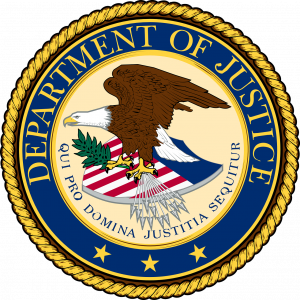Author: Steven J. Cernak
The FTC’s challenge of Altria’s investment into its e-cigarette competitor JUUL Labs, Inc. (JLI) already raised interesting antitrust and administrative law issues: Did the parties’ discussions of FTC compliance during merger negotiations create an unreasonable agreement? Are the structure and procedures of the FTC constitutional?
Recently, the case took another unusual turn. In early November 2022 — after the Commission voted out the complaint; FTC Complaint Counsel tried the case; the in-house administrative law judge issued a decision favoring the parties; and the Commissioners heard oral argument on an appeal — the Commissioners sought additional briefing on the possibility of applying different theories that would make it easier for the FTC to win. The Commissioners’ request seems to be allowable under the FTC’s procedures but might not help it in responding to potential constitutional challenges to those procedures, whether in this case or another one before the Supreme Court.
Facts and Prior History
We covered the case’s facts and procedural history in detail for this Washington Legal Foundation Legal Backgrounder. Here is a short recap.
Altria was the largest and one of the oldest cigarette companies in the country but struggled mightily with e-cigarettes. JLI was a new, smaller company successfully focusing on e-cigarettes. In early 2018, the two parties began nearly year-long negotiations towards a large Altria investment in JLI. Throughout the rocky negotiations, the parties and their respective antitrust counsel discussed and exchanged documents about the likely need to take some action regarding Altria’s competitive e-cigarette assets during the expected FTC antitrust review.
After some FDA communications and during a break in the negotiations, Altria announced that it would pull some of its e-cigarette products. Negotiations resumed and shortly before reaching an agreement with JLI (which included a formal non-compete agreement), Altria announced that it would cease all e-cigarette sales.
The FTC investigated and the then-Commissioners, including current Commissioners Slaughter and Wilson, issued a complaint challenging the entire transaction. The complaint, inter alia, alleged an unreasonable agreement by which Altria agreed not to compete with JLI in the e-cigarette market “now or in the future” in exchange for an ownership interest in JLI. Specifically, that agreement took the form of the non-compete provisions of the written agreement as well as an implicit agreement to exit the market reached during negotiations as a “condition for any deal.”
Per the FTC’s procedures, the challenge was heard by the FTC’s internal administrative law judge. After extensive pre- and post-trial briefing, 20 witnesses, 2400 exhibits, and 13 days of hearing, in February 2022 the ALJ issued a 250-page opinion finding that the FTC’s Complaint Counsel did not prove that the parties reached an agreement for Altria to exit the e-cigarette market and that the non-compete provision of the investment agreement was not unreasonable. FTC Complaint Counsel immediately appealed to the Commissioners.
Throughout the challenge, the parties challenged the constitutionality of the FTC and its procedure on separation of powers and due process grounds. The parties’ briefing made much of the FTC’s enviable 25-year winning streak of the Commissioners never ruling against a challenge that they voted out. A different company whose actions are being challenged by the FTC, Axon Enterprise, recently argued to the Supreme Court that it should be allowed to raise similar constitutional issues before going through the same FTC’s procedures as Altria/JLI did.
Latest Request from Commissioners
In the WLF piece just before the oral arguments to the Commissioners, I suggested that the most interesting antitrust issue would be whether discussions among parties about actions they might take to address expected FTC antitrust concerns could ever add up to an agreement. I also wondered whether the Commissioners might, for the first time in 25 years, rule against a complaint they had issued to avoid any constitutional challenges in this case and, perhaps, to assist in any constitutional challenge in the Axon case.
I expected that by early November, the four remaining Commissioners would be well on their way to deciding the case and issuing an opinion; instead, on November 3, the Commissioners issued an Order requiring the parties and Complaint Counsel to brief two new issues. Specifically, assuming they overturn the ALJ’s opinion that the parties did not reach an unwritten agreement for Altria to exit the e-cigarette market, the Commissioners sought briefing on whether such an agreement should be analyzed as either per se illegal or inherently suspect. The Commissioners also ask if the history of this matter poses any impediments to considering these different standards and, if so, what steps would be necessary to overcome those impediments.
Applying the per se standard would make automatically illegal any such agreement that the Commissioners find the parties to have reached. Applying the inherently suspect standard would drastically lower the standard that the FTC must clear to find unreasonable any unwritten agreement reached by the parties. The inherently suspect standard, and an appellate court’s criticism of it the last time it was used in a high-profile case, are summarized in this recent post.
Conclusion
The briefing by the parties and Complaint Counsel will end just before Christmas. A ruling by the Commission would then be required by around the end of March, unless the Commission again further delays its responsibilities unilaterally. Here are three take-aways.
 The Antitrust Attorney Blog
The Antitrust Attorney Blog












